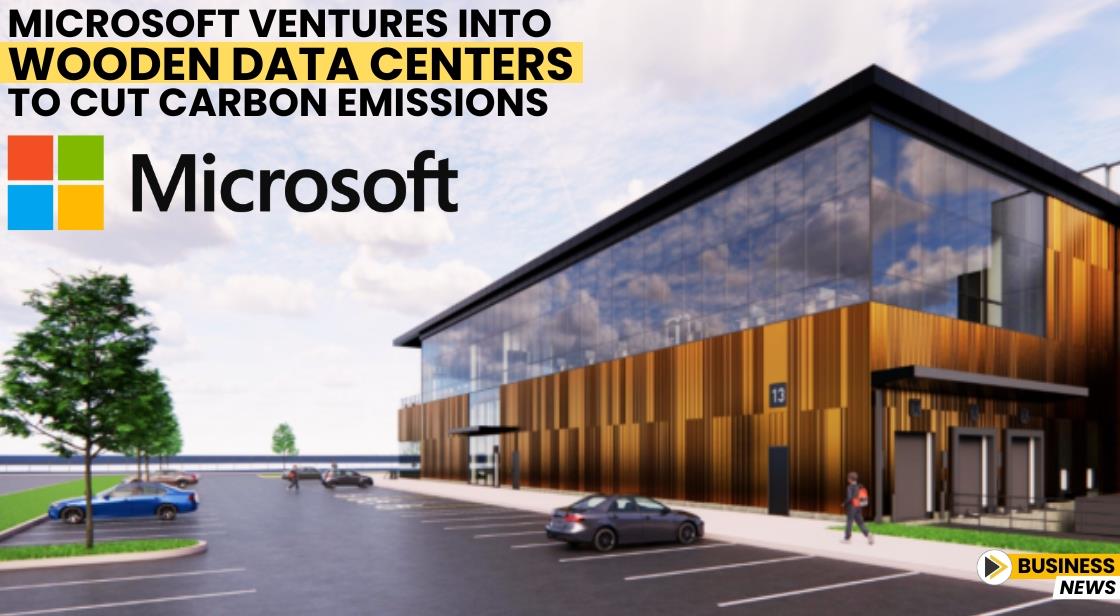Microsoft Ventures into Wooden Data Centers to Cut Carbon Emissions

Podcast
News Synopsis
In a bold move to promote environmental sustainability, Microsoft is transforming traditional data center construction by exploring wooden structures. The tech giant has announced that it is testing fire-resistant cross-laminated timber (CLT) to build its first wooden data centers in northern Virginia. This novel approach aims to replace carbon-heavy construction materials like steel and concrete, significantly reducing emissions associated with traditional builds.
Embracing Wood to Reduce Carbon Footprint
By opting for wood-based data centers, Microsoft aims to reduce its environmental impact while aligning with its ambitious climate commitments. Microsoft has pledged to become carbon negative by 2030 and offset all emissions produced since the company's founding by 2050. While Microsoft has made strides in reducing its operational emissions, data centers continue to face sustainability challenges, particularly due to indirect emissions from sourcing, manufacturing, and transporting building materials, which have increased by nearly 31% over three years.
Lowering Embodied Carbon with Cross-Laminated Timber
Benefits of CLT in Hybrid Construction
Microsoft’s adoption of cross-laminated timber (CLT) within a hybrid construction model is anticipated to yield impressive results in reducing embodied carbon emissions. This hybrid method, which incorporates some concrete and steel, is estimated to cut embodied carbon emissions by 35% compared to structures built solely with steel, and by 65% when compared to standard concrete-based builds. Microsoft’s approach thus marks a significant step forward in eco-friendly construction, aligning with global goals to reduce the carbon footprint of urban infrastructure.
Microsoft’s Climate Innovation Fund and Green Partnerships
Beyond experimenting with wood-based data centers, Microsoft has demonstrated a strong commitment to sustainability through its $1 billion Climate Innovation Fund. To date, this fund has invested $761 million in scalable eco-initiatives aimed at curbing emissions. Microsoft has partnered with innovators like Sweden’s Stegra, which is developing hydrogen-based steel that emits only water vapor—an approach that can reduce carbon emissions by up to 95%. Additionally, Microsoft collaborates with Boston Metal, a company leveraging renewable energy to produce steel, releasing oxygen instead of carbon dioxide as a by-product.
Exploring Greener Concrete Alternatives
To minimize reliance on carbon-intensive concrete, Microsoft has teamed up with CarbonCure, a company renowned for injecting carbon dioxide into concrete, enhancing its sustainability profile. In addition, Microsoft is piloting a unique, zero-carbon cement developed by Prometheus Materials, which utilizes microalgae. Plans are underway to test this innovative cement in Virginia data centers, allowing Microsoft to assess its resilience and potential for broader adoption.
Industry Experts on Microsoft’s Role in Green Construction
Experts in sustainable building see Microsoft as uniquely positioned to drive the adoption of eco-friendly technologies. Microsoft’s scale and influence offer it the capability to push green building practices into mainstream acceptance. Structural engineering partners like Thornton Tomasetti recognize Microsoft’s efforts as pivotal in advancing sustainable construction methods, paving the way for broader industry adoption.
Leading the Charge Toward a Carbon-Neutral Future
By embracing wood-based construction and forming strategic alliances with leaders in sustainable innovation, Microsoft is actively demonstrating its commitment to a carbon-neutral future. With a proactive approach to integrating green materials and construction practices, Microsoft continues to set the benchmark for sustainable initiatives in tech and construction. As these efforts scale, they promise to have a ripple effect, encouraging widespread adoption of environmentally responsible solutions across industries.
Conclusion
Microsoft’s move to construct data centers using sustainable materials like cross-laminated timber is a forward-thinking approach to reducing the environmental impact of large-scale tech infrastructure. By exploring wood-based construction and fostering partnerships with pioneers in green technology, Microsoft is not only addressing its own carbon footprint but also setting a powerful example for the industry.
As the company works towards its goal of becoming carbon negative by 2030, these innovative steps reinforce Microsoft’s role as a leader in sustainable practices. This commitment to eco-friendly development could inspire other organizations to adopt similar practices, accelerating the shift toward a more sustainable future across industries.





